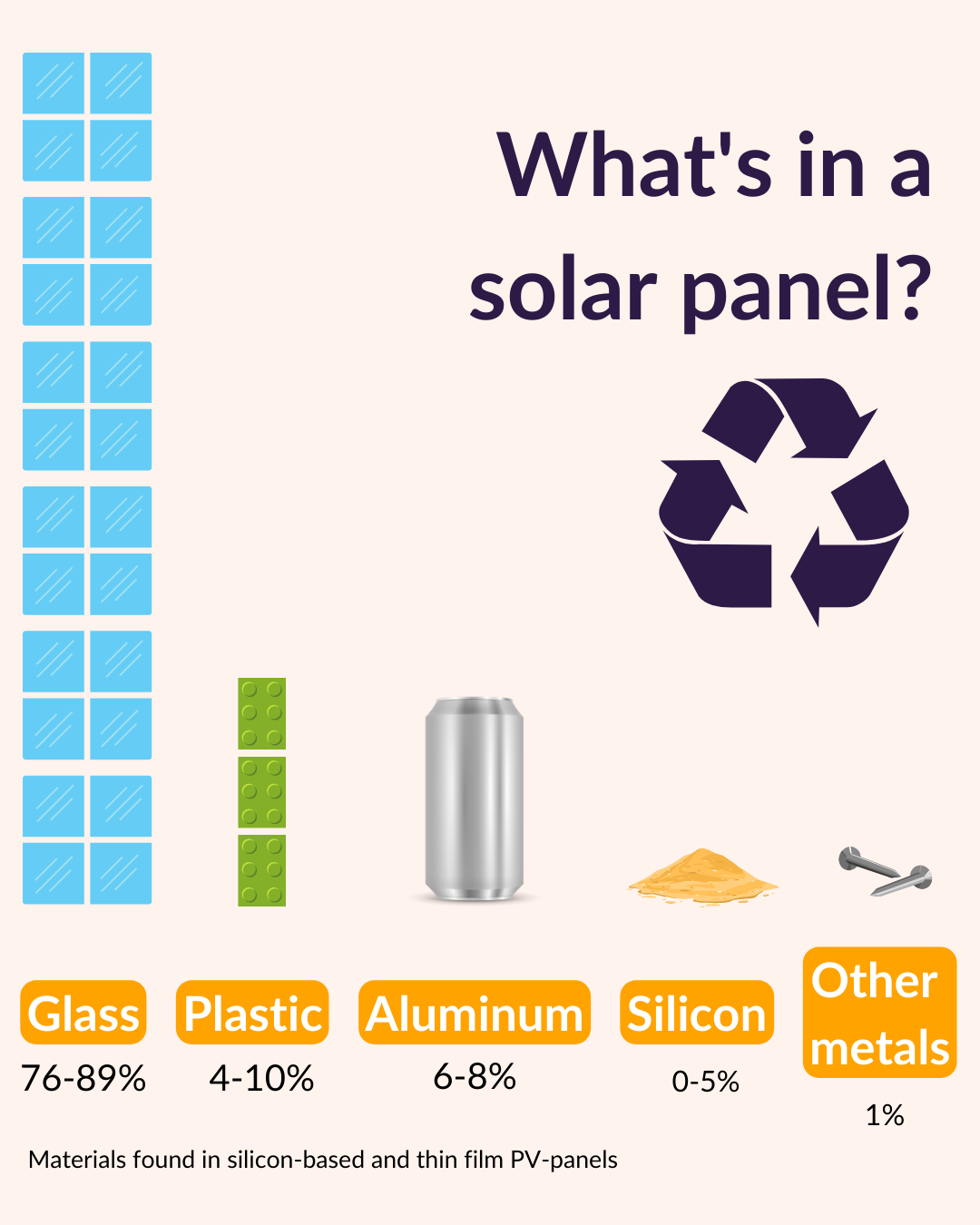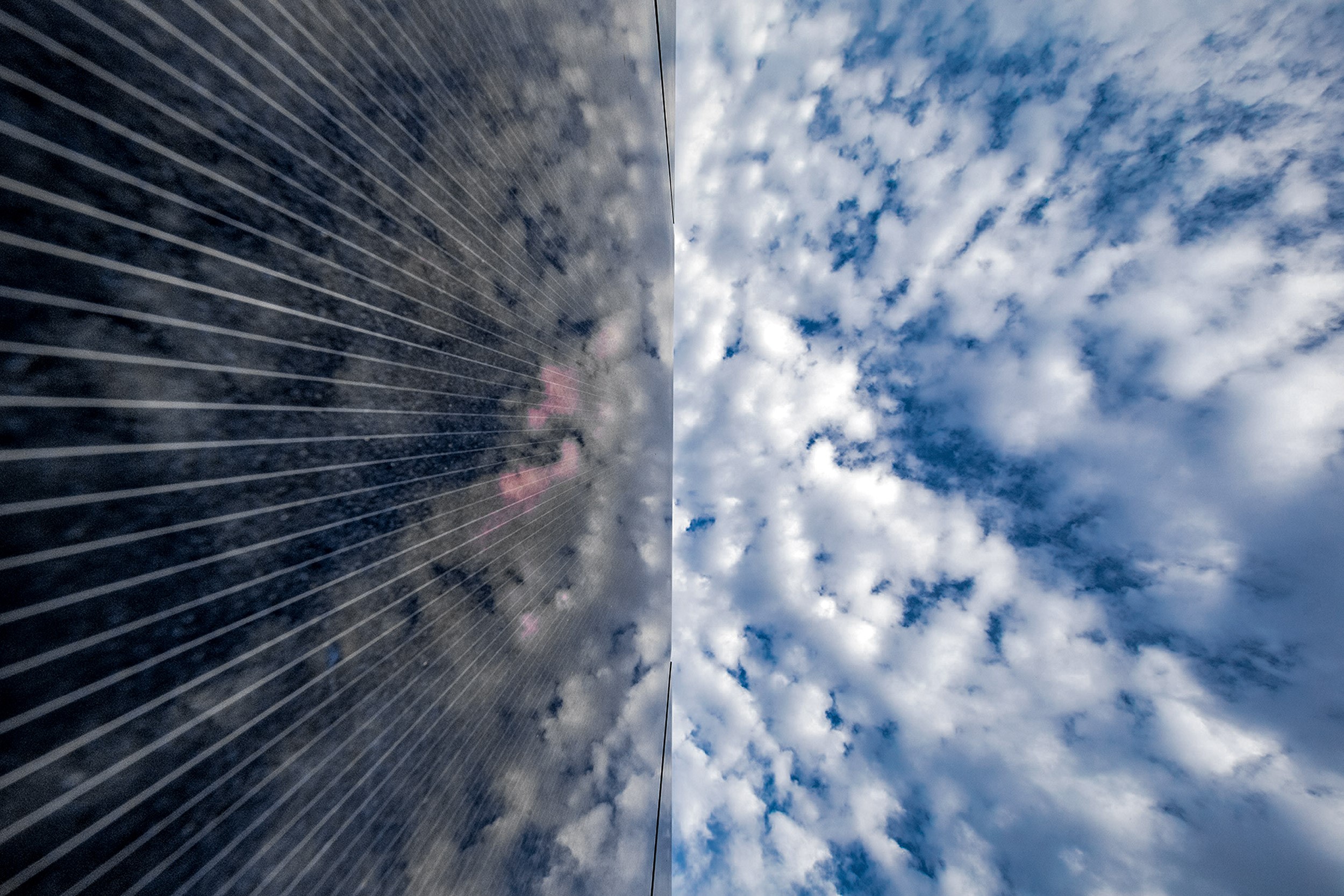Our commitment to solar panel safety and recycling
Recycling and solar panel safety are top priorities
At Lightsource bp, we manage our solar farms across America with the safety of communities — and the land — as a priority. That’s why we’re committed to recycling and promoting circularity. We are also committed to ensuring that the solar panels we procure are safe.
Testing solar panels for safety
As part of our procurement process, solar panels must pass strict testing protocols that have been established by the Environmental Protection Agency (EPA). That means that we only buy solar panels that have passed rigorous testing to prove that they are not hazardous to people or the environment, even if broken.
Prevent: Solar panels are designed to last for decades in harsh environments. The layers of a solar panel are strongly laminated, and all materials are sealed inside tempered glass, preventing exposure to the environment. This is the same material used in car windshields and hurricane windows!
Test: All solar panels used at our solar farms are required to pass a strict EPA testing protocol called the Toxicity Characteristic Leaching Procedure (TCLP). This test ensures that even if a solar panel is broken into pieces, it will not release harmful amounts of hazardous materials into the environment.
Pass: All solar panels provided by our suppliers must pass TCLP testing, which includes testing for eight metals listed by the Federal Resource Conservation and Recovery Act (RCRA) as toxic at small concentrations. This means that all of the solar panels at our solar farms are confirmed to be non-hazardous under Federal Law.
By passing the EPA TCLP test, solar panels are categorized as non-hazardous waste under RCRA, and could be safely disposed of in a landfill. However, at Lightsource bp we have pledged to recycle all of our solar panels.
Our solar panel zero landfill commitment
As the first solar developer in the U.S. to pledge to recycle all of our solar panels, we are committed to being a leader in recycling and promoting circularity in the industry.
Solar panels are designed to last more than 25 years. In some cases, nonfunctioning panels can be reused or refurbished to have a “second life” of generating electricity.
When a panel is eventually at its end of life and ready to be decommissioned, by weight more than 80 percent of a typical solar panel is glass and aluminum – both common and easy-to-recycle materials.

Recycling exclusively with U.S. partners
Along with our commitment to recycling, we only use preferred U.S. recycling partners that have been evaluated by the Solar Energy Industry Association (SEIA).
SEIA has created a national PV recycling member-based program that aggregates the services offered by recycling and refurbishment providers, making it easier to select a cost-effective and environmentally responsible end-of-life management solution. Recycling facilities that have been vetted by SEIA:
- Must collect and process in the U.S., no exporting
- Must be accredited
- Must strive for maximum material recovery and second life usage
- Must work sustainably and promote sustainability
At Lightsource bp, that means we can confidently utilize solar panel recycling facilities – vetted by SEIA – with the assurance that the panels will be processed here in the U.S., and that the facilities strive for maximum material recovery and second-life usage.
Together with SEIA, we are making strides in furthering the responsible end-of-life management of solar panels. We see decommissioned solar panels as an opportunity for material recovery. Once the amount of PV modules that require recycling is large enough, scaling of reprocessing facilities will greatly reduce cost and diversify the supply chain, increasing the security and sustainability of PV module material sourcing.
Our global sustainability efforts
Lightsource bp seeks to positively impact the waste footprint of our operations by committing to reusing or recycling solar panels in our owned assets and measuring and improving our waste footprint worldwide.
Learn more about these efforts, along with our progress in the U.S. and globally, in our 2022 Sustainability Report.
More on our sustainability efforts
08 Sep, 2023
Keeping an eye on the horizon: Updates on Lightsource bp’s comprehensive hail mitigation program
Article by Dave Martin



